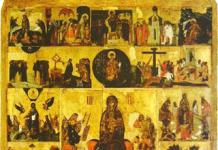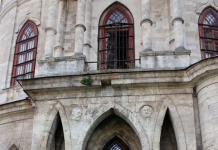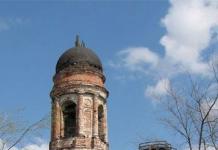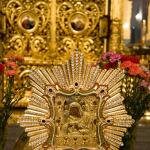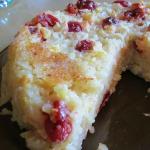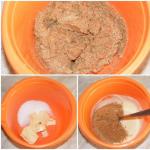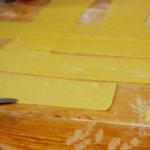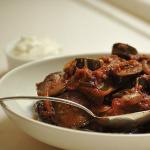I have long heard about one of the most beautiful and most unusual cathedrals in the Moscow region - the Vladimir Church in Bykovo, which looks like a fairy-tale castle. In addition, the noble estate of Bykovo with a park has been preserved nearby. All this served as a reason to go and see this beauty one summer weekend.
The Bykovo estate is located a few kilometers south of Moscow, so getting to it is quite easy even without a car.
As soon as we got off the minibus, we saw the spire of the Vladimir Church. Focusing on it, we walked along private houses to the temple. It was built in 1789 according to the design of the famous architect V.I. Bazhenov for the favorite of Empress Catherine the Great, Izmailov. The church is made in a pseudo-Gothic style and looks quite unusual for our Moscow region. It looks more like some kind of ominous castle, especially from the side of the impressive staircase.
The temple is divided into upper and lower. There is a functioning church downstairs where services are held. The passage to the top is closed due to the fact that the staircase is in disrepair and requires restoration.

Facade of the Vladimir Church
In general, despite the fact that I saw photographs of the entire church along with the stairs on the Internet, it turned out that it was quite difficult to take such a photo without a wide-angle lens. It was not possible to move a sufficient distance away from the entrance, due to the fact that repair work was underway on the territory and building materials were laid out around.

Vladimir Church of the Bykovo estate
In addition, on a small platform near the church there is a bell tower, built already in the 19th century, but which fits perfectly into the architectural ensemble of the Vladimir Church.

Bell tower of the Vladimir Church
There are plenty of tourists here on weekends; everyone is trying to capture this work of art as a keepsake, and themselves against its background.
It can be seen that the people at the church take good care of the territory: flowers are planted around, renovations are slowly underway. I hope that soon it will be possible to restore such an unusual temple and preserve it for future generations.

The area around the temple
Bykovo Estate
Having gone around the church along the path along the playground and walking along the five-story brick building, we came to the entrance to the park. We walked through a turntable, the same one that was installed in Soviet factories, and ended up in the park of the former Bykovo estate. The mountains of garbage immediately caught my eye. It is very difficult to take at least one photo without some pile of papers, a bottle or a tin can getting into the frame. I never understood how difficult it is to clean up trash after yourself, but you definitely have to leave it in the forest, or in such a stunning place as this estate. People, come to your senses!
The park is also in disrepair and extremely poorly maintained, although some alleys and paths have been preserved.
Once upon a time this estate amazed with its splendor. This place was donated to the Governor of Moscow M.M. Izmailov by Catherine the Great herself. Since on official business he was familiar with the architects who were involved in the construction of the royal estate of Tsaritsyno, V.I. Bazhenov and M.F. Kazakov, he also attracted them to build an estate on his estate in Bykovo.

Main house of the Bykovo estate

In the park of the Bykovo estate
The manor's house was built on an artificial hill, for which the peasants carried the earth in baskets. And they took this land from the park when they dug ponds there.

View from the hill on which the estate is located
Later, under the new owners, the Vorontsov-Dashkovs, the main house was rebuilt and took on the outline of an English castle. All that remains of Bazhenov’s creation is the foundation and a snow-white balustrade at the entrance to the house. This explains the strange appearance of the buildings, which is more common in European countries.

Bykovo Estate
Around the estate there was a park with several ponds, a greenhouse, a Hermitage palace and an alley of black roses bought for gold in France. As you understand, all the former beauty cannot be seen now, which cannot but upset.

Pond near the Bykovo estate
The Vorontsov-Dashkovs were not the last owners of the Bykovo estate. The fact is that, according to legend, one day, in the absence of his wife, the owner of the estate held a dinner party, to which he invited his mistress and promised to give her an estate in Bykovo. When his wife learned from the servants about such a promise, she ordered her husband to immediately sell the estate.

Main entrance to the Bykovo estate
The next owners of the estate were representatives of the Ilin family, who owned Bykovo until the revolution. Later, the estate was nationalized; it housed an orphanage and then a tuberculosis sanatorium. During all this time, numerous valuables of the manor's house were stolen, the greenhouse and the Hermitage palace were destroyed, and the park fell into disrepair.

In the park of the Bykovo estate
Fortunately, on one of the ponds a rotunda gazebo, the work of V.I., has been preserved. Bazhenova. Now it rises on an island and is heavily obscured by wild vegetation. And once upon a time, the owner of the estate met his beloved here, the ponds were well-groomed, and numerous alleys led to the house.

Bykovo estate. Bazhenov's gazebo on the pond
We saw the noble estate from below, and I must say, it made an amazing impression. On the hill rises a red brick building, with a balcony supported by columns with images of girls. Above the balcony is the coat of arms of the Vorontsov-Dashkovs. The palace balustrade has already been destroyed in places, which is a pity.

Columns of the Bykovo estate
I would really like to hope for the restoration of such a beautiful estate, not only the facade, but also the interiors. In this case, I would be happy to visit Bykovo again, I would be happy to visit the museums. Eh...dreams, dreams. But it would be quite possible to do something like Arkhangelsk. There is both the necessary space and beautiful creations of famous architects that can still be saved.
Despite everything, the estate in Bykovo amazed us with its former grandeur and unusual architectural solutions. And the Vladimir Church is a unique temple for the Moscow region, which is definitely worth seeing with your own eyes.
How to get to the Bykovo Estate and Vladimir Church
Address: Moscow region, Ramensky district, village. Bykovo, st. Kolkhoznaya
By car: in the direction from Moscow you need to go along the Ryazanskoye Highway. Approximately 8 kilometers to the turn to Bykovo (via Zhilino), then turn left. Next you need to go to Bykovo and Zhukovsky, and not to the airport. You need to drive through Bykovo, at the border between Bykovo and Zhukovsky at the traffic lights turn right, then after 200 m turn right again. To get to the Vladimir Church, go along Shosseynaya Street.
You can get to the Bykovo Estate by train from the Kazansky station to the Udelnaya platform, and then by minibus 23 or 39 to the Temple stop. Buses No. 424 also run from the Vykhino metro station. A train ticket costs 70 rubles one way, and a bus ticket costs 58 rubles.
The creation of this extraordinary temple is attributed to the hand of Vasily Bazhenov and the construction dates back to 1789. But there are other opinions - this mysterious monument is too unlike other creations of the great architect (read here). The Vladimir Church in Bykovo stands far away not only from the Ryazan highway, but also from the main path of evolution of Russian Orthodox architecture.
The temple of amazing harmony, beauty and unique style still remains little studied. This two-story church was built in honor of the Vladimir Icon of the Mother of God on the site where the wooden Church of the Nativity of Christ had been located since ancient times. Experts say that this is our only oval-shaped Temple.
Take, for example, the stairs that greet us at the entrance to the church grounds. Russian temple architecture did not know such staircases. It seems that this ceremonial entrance, outlined by a light parapet, leads not to a temple, but to a palace. And if the crosses are removed from the spiers, then the structure can easily be mistaken for a palace building of a bizarre shape, reminiscent of a Western European medieval castle. The church is completed with a dome surrounded by a number of spiers. The bell towers are also topped with spiers.
There is a bell tower next to the temple. In the 30s of the 19th century, a bell tower was erected next to the Temple according to the design of Bazhenov’s student, architect Tamansky, and so successfully and harmoniously, as if it was conceived by Bazhenov himself.
The main volume of the temple is oval in plan, placed on a high basement; a large rectangular refectory with two bell towers in the corners is attached to it from the west. The main volume ends with a light rotunda with a high spire at the top; it is surrounded by a number of similar spiers. On the sides of the oval of the main volume of the temple there are high lancet windows, between which there are decorative porticoes with columns framing the side entrances. There is a rich carved cornice under the roof. Tall windows with pointed tops also decorate the refectory, the side facades of which are topped with tympanums. On top of the refectory there is a low rotunda with a very small spire with a cross. The refectory was expanded in the first half of the 19th century.
The temple looks very impressive from the west, from the bell towers. A two-way grand staircase leads to the area in front of the entrance to the upper temple, under which is the entrance to the lower temple. One bell tower was built as a bell tower itself, with a platform for ringing, the second - for a clock. The round upper tiers of the towers are cut through by arched openings and end with domes with high spiers, the same as those above the central chapter.
The entire decor of the temple is unusually rich. The variety of details, designed in a single Gothic style, gives the tall building a upward thrust, expressed not only in pointed spiers. In 1884 A separate bell tower was built next to the temple in imitation of the same style. Some sources call it the architect D.A. Gushchin, others - I.T. Tamansky.
The bell tower had seven bells, the largest of which weighed 117 pounds, and the smallest only 70 pounds. The painting of the walls of the Temple is late; it was done at the request of parishioners in 1912, but was not completed. The temple icon of the Vladimir Mother of God appeared here after M. M. Izmailov, and before that there was the Izmailov family icon - the Kazan Mother of God.
The temple in the village of Bykovo is unique in that it has two floors. The lower limit is in honor of the Nativity of Christ, and the upper one was built in honor of the Vladimir Icon of the Mother of God. The church itself was named after the upper limit. The main feature of the upper limit is that artificial marble was used in its design. Over time, its recipe was lost. Modern craftsmen have managed to restore the composition of the white-pink stone, which is difficult to distinguish from the original. Fragments of stucco molding and ancient paintings have been preserved here.
The Temple building is built of brick and faced with white stone on the outside. The plan is based on an ellipse, which was never used in Rus' in church architecture and extremely rarely in secular construction.
This is the only white stone church in the world built in the Russian Gothic (or pseudo-Gothic) style; it is also called the northern Taj Mahal.

The Vladimir Icon of the Mother of God is the greatest shrine of the Russian land. According to legend, it was written by the Apostle Luke in the first century after the Nativity of Christ. An ancient copy of the Vladimir Icon of the Mother of God is kept in the Temple of the village of Bykovo. The icon streams myrrh, and it is she who is especially worshiped by parishioners. Services here are held not only on weekends, as is customary in the countryside, but every day. In 1937, the Vladimir Temple, like many Temples throughout Rus', was closed and used for economic needs. At present, the restoration of the limit of the Nativity of Christ is almost complete. Experienced specialists recreated icons, gold carvings and paintings. The luxurious three-tier iconostasis in the Russian Baroque style of the 17th century was made based on pre-revolutionary photographs.
The inside of the temple is decorated in a classic style. The vaults rest on four groups of columns with Corinthian capitals, the decoration is made of artificial marble, with wooden carvings. The interiors were badly damaged during Soviet times: in 1937. the church was closed and destroyed. Crosses were knocked off the spiers, the bell tower was left without bells, and many church utensils and books were destroyed. The temple building housed a garment factory. Later it was replaced by a warehouse for the cinema department. In 1989 The temple was again handed over to believers, restoration work and services began.
Parishioners consider their Temple to be prayed for. The unusually warm atmosphere is conducive to deep thought.
Two stories are told about the church: 1. During Bolshevism, a stable was built in it. After the horses died, they decided not to use it for these purposes anymore. 2. A certain brave Bolshevik decided to remove the bell. He was warned not to. Many were afraid, but he was not afraid. As a result, while trying to remove the bell, he fell and... died. They said that there were several attempts...
Directions:
- from Kazansky station a) to the station. Specific, transfer to bus. Art. Udelnaya - Vereya, or b) to the station. Rest, transfer to bus. Art. Rest-Vereya, or c) to the station. Ilyinskaya, then walk 4 km, or d) to the station. Bykovo, then walk 1-2 km or minibus 22P, walk 1 km
Driving by car: From Moscow along the Ryazanskoe highway to the turn to Bykovo (via Zhilino) - 8 km, then turn left. Next - travel not to the airport, but to the cities of Bykovo and Zhukovsky. Drive through Bykovo, at the border between Bykovo and Zhukovsky, turn right at the traffic light, then after 200m. turn right again onto the street. Highway, and drive along it to the church.
From the Vykhino metro station by buses 424, 430, 431 metro station "Vykhino" - Zhukovsky to the "Temple" stop, or from the Kazansky station to the Bykovo stop, then by bus to the "Temple" stop
The exact coordinates of the church are N55°36.6537" E38°03.4989". You can also get there by taking the 23rd autoline. Tell them to drop you off in the village of Bykovo near the church, since you will never guess where to go (the church is not visible from the road).
Before this, we had already visited Bykovo twice - and for some reason we were always unlucky with the weather. On the eve of the trip, we looked at the forecast - Gismeteo promised a clear sunny day.
We wake up at 8 am, look outside - the sky is overcast, and the snow is falling in large flakes without stopping. At the same time, all forecast sources have been updated and show clouds and snowfall throughout the day, only optimistic Yandex claims that it is supposedly sunny in Moscow now. I was already thinking about staying at home, but Yulia still wanted to go. In order not to argue, they planted an old “pocket” from 1991, which I took with me to exams in school (and at the institute too) in order to get an “excellent”. :) The coin made it clear that we had to go. Well, we went - and we were not disappointed!
The Church of the Vladimir Icon of the Mother of God in the village of Bykovo was built in 1789. According to one, the most widespread and authoritative version, its project belongs to V.I. Bazhenov, according to others - to M.F. Kazakov or A.N. Bokarev.

The white stone church in the Russian Gothic (or pseudo-Gothic) style has no worthy analogues in the temple architecture of the Moscow region, and, perhaps, in the temple architecture of Russia in general. There are two churches in the building - the upper one in honor of the Vladimir Icon of the Mother of God and the lower one in the basement - the Nativity of Christ.

The main volume of the temple is oval in plan, placed on a high basement; a large rectangular refectory with two bell towers in the corners is attached to it from the west.

The main volume ends with a light rotunda with a high spire at the top, surrounded by a number of similar spiers.

The entire decor of the temple is unusually rich.

On the sides of the oval of the main volume of the temple there are high lancet windows...

...Between which there are decorative porticoes with columns framing the side entrances.

The temple looks very impressive from the west, from the bell towers. A two-way grand staircase leads to the area in front of the entrance to the upper temple, under which is the entrance to the lower temple. One tower was built as a bell tower with a platform for ringing, the second - for a clock.

Let's take a closer look at the decor.



The round upper tiers of the towers are cut through by arched openings and end with domes with high spiers, the same as those above the central chapter.

In 1884, a separate bell tower was built next to the temple in imitation of the same style. Some sources call it the architect D. A. Gushchin, others - I. T. Tamansky.

To the side of the street on which the church stands, in the depths of the ancient park, is the Bykovo estate itself, or rather, what has remained of it. The current manor building was built in 1856 by the architect de Simon on the basements of the previous manor house. Currently, it houses a functioning tuberculosis clinic. In 1704, Peter I granted this village to the Rostov governor Illarion Vorontsov “for services to the Fatherland.” Vorontsov was not rich, he owned only two hundred peasant souls. Almost no one remembers Illarion Vorontsov himself now; his descendants became much more famous.

The great-grandson of the voivode, Prince Mikhail Semenovich, was entrenched in history not only because he showed himself brilliantly as the tsar’s viceroy, but also because it was about him that young A.S. Pushkin, who had tender feelings for his beautiful wife, wrote a rather evil and unfair epigram .

“Half my lord, half merchant.
Half sage, half ignorant,
Half-scoundrel, but there is hope
What will be complete at last."

In 1775, Catherine II visited many estates near Moscow, including the estate in Bykovo. The estate looked extremely modest and did not make any impression on the empress. The count could not tolerate such shame. He immediately invited the chief architect of Russia, Vasily Bazhenov, to redevelop the estate and park.

Bazhenov willingly set to work. He set himself a goal: to radically change the appearance of the master's estate. The Bazhenovs decided to build a new palace in the western part of the estate on oak piles. The hill on which the palace now stands was created artificially. The peasants carried the earth for the hill on themselves in wicker baskets from the places where three ponds were dug.

The walkway, located in front of the portico, is framed by a balustrade - a railing made of figured posts. To the left of the palace, a high tower was erected, on which a telescope and a sundial were installed. Above the balcony is the coat of arms of the Vorontsov-Dashkovs.

The southern façade was built in a classical style. Its decoration is a portico with columns in the form of beautiful female figures, on which the balcony rests.

There is a romantic legend that one of the Vorontsov-Dashkovs, in the absence of his wife, organized a friendly dinner in the palace.

His beloved was invited to it, to whom he allegedly promised to give the palace.

Having learned about this from the servants, the wife demanded to sell the estate. And the old-timers recalled how they once saw the failed owner of the estate, who lived in Moscow until the war, walking with a small knapsack...

The coat of arms of the Vorontsov-Dashkovs is a combination of the count coat of arms of the Vorontsovs and the noble coat of arms of the Dashkovs.

Let's take a closer look at it. Below you can still make out the motto: “Semper immota fides”, which translated from Latin means “Eternally unshakable loyalty”.

The name of V.I. Bazhenov is also associated with the pavilion-gazebo preserved on one of the islands of the pond in the park. The snow-white gazebo is truly proportional and harmonious. Three circular pylons and Corinthian columns support a wide cornice and dome. Unfortunately, the elegant bridge to the island no longer exists, and you can now only get to the gazebo in the summer by boat. But in the cold season you can try to walk to it on the ice, but we didn’t dare then.

Let's return to the palace. Inside it was decorated in English style. The walls of the double-height dining room were lined with oak; under the ceiling there was a frieze of portraits of the Vorontsov family. The Vorontsov library of the 18th century and a portrait of the famous Princess Dashkova (friend of Catherine II) by Levitsky were kept here. Everything melted and was carried away in a whirlwind of time, like the Bazhenov house itself...
Addition from our readers: How to get to Bykovo?
From Moscow to the Bazhenov Church, it is better to go along the Novoryazanskoye Highway (Volgogradsky Prospekt), and then along the highway to Zhukovsky (there are several turns from the Novoryazanskoye Highway to Zhukovsky, any one is suitable).
In the village of Ostrovtsy, at the traffic police post, turn left (signpost to Zhukovsky and Bykovo airport). There have already been turns with these signs before (they also lead to the goal, so if you turn earlier, there will be no mistake). From the bridges over the Pekhorka and Bykovka rivers, to the right along the way, you can see the park rising along the slope of the bank and the palace tower. The church is not visible, it is to the east, behind the park. Next, in order not to get confused in the numerous streets of the village, it is better to get to the highway to Zhukovsky and turn right along it (all access options converge at this point).
On the right, along the highway, one-story houses of the village stretch, and behind them you can already discern the spiers of the Bazhenov temple. At the point where the one-story buildings end (further - multi-story buildings), you need to turn right from the highway and then right again, onto a street parallel to the highway (but in the opposite direction). This street leads almost directly to the church (it will be visible on the left at the end of the short transverse passage).
The time is an hour to an hour and a half, depending on the traffic congestion towards the region, IMHO.

The main church in Moscow, consecrated in the name of the Vladimir Icon of the Mother of God, stood before the revolution in Kitay-Gorod, near Lubyanka Square, at the very beginning of Nikolskaya Street. It was founded by vow of Queen Natalya Naryshkina where the chapel with the Icon of Vladimir stood from ancient times. This chapel, like the church, was founded on that road and near the very place where in 1395 Muscovites greeted the miraculous image of the Mother of God from Vladimir with reverence and fear, hoping to find salvation from the terrible Timur, who was marching with an army to Moscow.
And in memory of that legendary, fateful meeting for Moscow, not only the Moscow Sretensky Monastery was founded, but also the Vladimir Chapel on the Moscow Posad, and after it the parish Vladimir Church on Nikolskaya. Its scaly head, “like a hedgehog bristling with thorns,” as a modern Moscow scholar puts it, was far visible from the surrounding area and beautifully towered over the ancient buildings of Nikolskaya Street.
The Vladimir Icon is the main Orthodox and historical shrine of Moscow, and with it the entire Russian state. According to legend, the image was painted by the Evangelist Luke himself on a board from the table at which the Savior and the Most Holy Theotokos had a meal with the righteous Joseph the Betrothed. The icon came to Rus' only at the beginning of the 14th century - then it was sent from Constantinople to Prince Mstislav, who placed it in Vyshgorod. The son of the founder of Moscow, Prince Andrei Bogolyubsky, moved it to Vladimir and installed it in the newly built Assumption Cathedral. And already in 1395, when Muscovites were awaiting the invasion of the “great lame” with horror, the icon was first brought to Moscow, where by the grace of God it remained for centuries and more than once with its miracles saved the capital city from enemies and granted victories. It was to her that the Russians tearfully prayed in the fall of 1480, when the Mongol-Tatar yoke, which had tormented Rus' for 240 years, fell - after the great stand on the Ugra River, Khan Akhmet left Moscow without a fight and forever. And in 1521, the Vladimir Icon saved Moscow from the invasion of the Crimean Khan Mengli-Girey.
It is believed that the ancient chapel with the Vladimir image was built here, on the approaches to the Kremlin, in the same 1395, when the icon was welcomed in Moscow, or later, but precisely in honor of this event, according to Moscow custom. One way or another, the chapel stood here long before the construction of the China Town wall. And when in 1534 the Italian architect Petrok Maly, the architect of the Kremlin Assumption belfry, began to build a fortress wall, then on this site it was closely adjacent to the chapel: then a tower with a gate was built here, which received the official name “Nikolsky” after the local street and “Vladimirsky " - according to the chapel. And then, around the 16th century, a copy of the Vladimir Icon was placed on the outer wall of the Nikolskaya Tower of Kitay-Gorod. This tower ended up on the section of that very epoch-making Sretenskaya road for Moscow...
And Tsarina Natalya Kirillovna Naryshkina decided to build a church here, consecrated in the name of the Vladimir Icon. Indeed, by that time, not only in Moscow, but also in this historical place there was not a single parish church in honor of the miraculous icon, but only the Sretensky Monastery and chapel. And festive religious processions from the Kremlin took place directly to the monastery. The queen made a vow to build a church here.
The reason for this was not only the significant place - the queen considered the Vladimir Icon her patroness, since her name day fell on the day of the feast of the miraculous icon. And it was in the Vladimir image that the queen’s parents (according to other sources, her teacher, boyar Matveev) blessed her on her wedding day with Tsar Alexei Mikhailovich back in 1671. It was this family image that the widowed empress donated as a royal gift to the newly built church, although she did not live to see the consecration of her votive temple.
The construction of the beautiful church in the bright, patterned style of the Naryshkin Baroque was begun by personal decree of Peter I, who loved his mother very much, in the summer of 1691 using public funds from the Streletsky Prikaz, and it was consecrated in October 1694. Then a procession of the cross was held from the Kremlin on May 21 - in celebration of the miraculous salvation of Moscow from the raid of the Crimean Khan in 1521.
What's interesting is this. Because of its location, the church was assigned to the Zaikonospassky Monastery, on Nikolskaya Street, and it was its clergy who served in this ordinary Moscow church. However, the Vladimir Church did not and could not have its own parish in the trading district of Moscow, but, as one pre-revolutionary local historian wrote, this “parishless” church had the whole of Moscow as a parish, and everyone who walked along Nikolskaya Street certainly went into the temple to pray Intercessor of the human race and Savior of Moscow.
The priceless relics of the Vladimir Church corresponded to the “palace” status of the temple, built according to the queen’s vow. She became its first donor, and after Naryshkina, both Elizaveta Petrovna and Maria Fedorovna gave rich shrouds and airs, embroidered by the hands of the empresses, to this Chinatown church. The image of the Savior Not Made by Hands, in the manner of “Fryazhsky writing”, was, according to legend, painted by Simon Ushakov himself. In the second half of the 18th century, the architect Vasily Bazhenov built a huge iconostasis in the temple. The list of the Vladimir Icon at the beginning of the 19th century was decorated with a magnificent golden chasuble with precious diamonds, pearls, emeralds and yachts - this was a gift from the famous Count N.P. Sheremetev according to his will, since the previous setting of the temple miraculous icon was “lightweight”.
And opposite the Vladimir Church on the left side of Nikolskaya there once stood the courtyard of his grandfather, an associate of Peter the Great, the first Russian Count Boris Petrovich Sheremetev. And his daughter, Natalya Borisovna, bitterly mourned here the deceased Emperor Peter II, who greatly favored her husband, Prince Dolgoruky. After the death of the young ruler, she was exiled to Siberia, and her husband was executed. Now the old way of life, when along with the Moscow suburb in the privileged Kitai-Gorod there were courtyards of wealthy boyars, only the names of the local Cherkassky lanes remind us there - the courtyard of Count Sheremetev at one time belonged to Prince Cherkassky. Later, all the aristocratic residents were forced out by trading shops, educational institutions, and business centers of Moscow's Kitay-Gorod.
In the church there was another image of the Mother of God of Vladimir, in a silver setting - the same one with which Patriarch Joachim blessed Queen Naryshkina at the wedding with Tsar Alexei Mikhailovich.
And in 1805, a new chapel appeared at the church, in which they placed a copy of the icon in a beautiful silver chasuble, built with a donation from a wealthy Muscovite. In that century, the famous “break” already existed - the new entrance gate of the Chinese city wall, broken for the sake of ease of passage to Nikolskaya Street. These breach gates were often called “Vladimirsky”.
“Prolom” had the famous collapse of the Moscow second-hand bookstores (the second largest after Sukharevka), where passionate bibliophiles, “overwhelmed by the book,” were constantly rummaging in search of rarities. One of these inhabitants of “Prolom” was the historian and head of the cadets, Professor P.N. Milyukov, who, when he was a student at Moscow University, came here every day to hold an old and valuable book in his hands - and to add to his home library.
Already in Soviet times, this tradition happily continued - as if in memory of that collapse “at Prolom”, the popular second-hand bookstore “Book Find” was built here.
But the fate of the Moscow church turned out to be sad - in the fall of 1932 it was closed and transferred to the police club. And in the summer of 1934, it was demolished along with the wall of Kitai-gorod, and exactly on the 400th anniversary of this Moscow fortress. Now on the site of the temple there is a roadway.
Truly unique. One can only guess what impression it made at the end of the 18th century. Besides, Church of the Vladimir Icon of the Mother of God in Bykovo is unique in its planning solution: the central part of the structure has an oval shape.
At Vladimir Church They erected two bell towers - one for the ringing (seven bells were hung on it), the second for the clock, which they never succeeded in erecting.
The church in Bykovo amazes with its unusual beauty. Together with the estate, it could become a place of tourist pilgrimage, attracting lovers of beauty, and bring a lot of money to the budget. However, the church and the estate are forced to survive without receiving any support from the state.
Sasha Mitrakhovich 07.06.2018 07:42

We owe the construction of the Vladimir Church in Bykovo to the Governor General of Moscow, Mikhail Mikhailovich Izmailov. He was one of the favorites of Catherine II and participated in a conspiracy against Peter III, as a result of which the empress ascended the throne. In gratitude, the Empress gave him the palace village of Bykovo.
Izmailov settled in the village of Bykovo with his wife Maria, née Naryshkina. According to legend, Catherine once visited the Izmailov couple and was quite surprised by the modesty of their estate. And then, as they say, Mikhail Mikhailovich became zealous. He invited the eminent V.I. Bazhenov to equip his estate. (Bazhenov’s name appears on the memorial plaque).
During the process of rebuilding the estate, M. M. Izmailov became a widower. In memory of his wife, he decided to build a new church in the village, especially since the old one was pretty dilapidated by that time. Construction took almost nine years, and in 1789 a two-story church in the name of the Vladimir Icon of the Mother of God appeared in Bykovo.
Many explain the non-standard architectural solutions and decor that is uncharacteristic of Russian architecture by the fact that both the customer (Izmailov) and the architect (Bazhenov) seemed to sympathize with the Freemasons. Therefore, in the design of the church, they allegedly decided to encrypt the symbolism of the “free masons”.
The temple, lined with white stone, was surrounded by the same white stone fence with wooden gratings and obelisks. This beauty was destroyed in 1938.
Interior painting began in 1912 on the initiative of the parishioners of the Vladimir Church; the work was not completed before the revolution. The current painting of the church is partly restored old, partly made anew.
Sasha Mitrakhovich 08.06.2018 06:52

After the October Revolution, all kinds of organizations occupied the Vladimir Church - workshops, a school for demolitions, and a shelter for orphans of Red Army soldiers.
For some time after the October Revolution, a sewing workshop was “housed” in the Bykovsky Church of the Vladimir Icon of the Mother of God. Soon the factory was closed, the building was completely boarded up, and the tombstones from the cemetery located around the temple, where eminent citizens were once buried, were stolen. Later, a sanatorium for patients with so-called extrapulmonary tuberculosis was located in Bykovo.

By this time, the temple was in a deplorable state: the main dome was leaking, the interfloor ceilings were rotten due to dampness, the plaster had fallen off, and the stairs were collapsing.
Renovations began, which took almost thirty years, and huge amounts of money were spent. However, it was as a result of these works that the bell tower was damaged, the stairs completely collapsed, and the marble columns of the upper temple were broken and dumped on the floor.
In the nineties, in the wake of the return of churches to believers, the Vladimir Church was also transferred to the parish. Slow restoration began. Now the church is more or less in order.
Now the ancient interiors have already been recreated - carvings, gilding, frescoes... A luxurious three-tier baroque iconostasis has appeared - it was made from pre-revolutionary photographs, trying to accurately repeat the look of the previous one, which was created by the masters of the 18th century.
Sasha Mitrakhovich 08.06.2018 07:10

The Vladimir Church in Bykovo is one of the most striking examples of Russian pseudo-Gothic, the “romantic movement” in Russian architecture. Fewer monuments in this style have survived than contemporary monuments in the classicist style, but they occupied a specific niche in the history of Russian architecture.
As a rule, estate outbuildings and temples were built in pseudo-Gothic style. An interesting difference between the Bykov church is that following the “Gothic” tradition, the architect uses a technique rare for Russian architecture, building a temple with two bell towers.
Sasha Mitrakhovich 08.06.2018 07:19

The church in Bykovo is two-story; it combines a heated winter and “cold” summer aisle in a single building. On the upper floor there is a chapel consecrated in the name of the Vladimir Icon of the Mother of God, on the lower floor there is actually a high basement - in honor of the Nativity of Christ. Only the latter is currently valid.
The Vladimir Church has a four-pillar supporting structure, arched vaults, and a conch above the altar. Evangelists in sails, a domed vault - all these are traditional elements of the architecture of an Orthodox church! Everything is decided in a good Russian classical style.
The walls and columns are decorated with artificial marble of a pleasant soft pink shade; together with it, the pastel green-blue coloring of the walls creates one of the favorite color combinations in classicism.
It is worth paying attention to the gilding; it is used tastefully, without excess, despite the fact that its role in decoration is very important. It covers the relief elements of the ornament (mostly floral) and the capitals of the internal columns.
The “bushes” of columns are grouped four by four. They actually replace the load-bearing pillars of a traditional temple; the supporting arches supporting the dome rest on them. Another interesting detail: the columns closest to the altar in these groups are not round, like the others, but quadrangular. It is unknown what the reason for this decision is. However, these
The “non-standard” columns are skillfully disguised both by the texture of the facing marble and by the design of the capitals: their bases are quadrangular, but in general they repeat the shapes of the capitals of the “round” columns.
